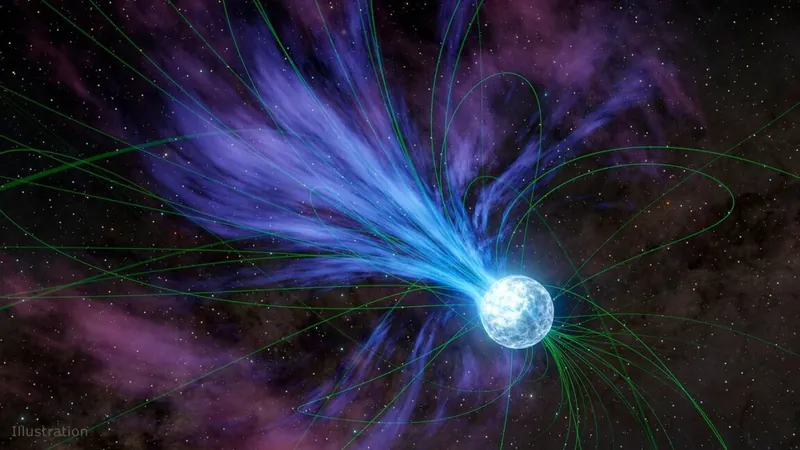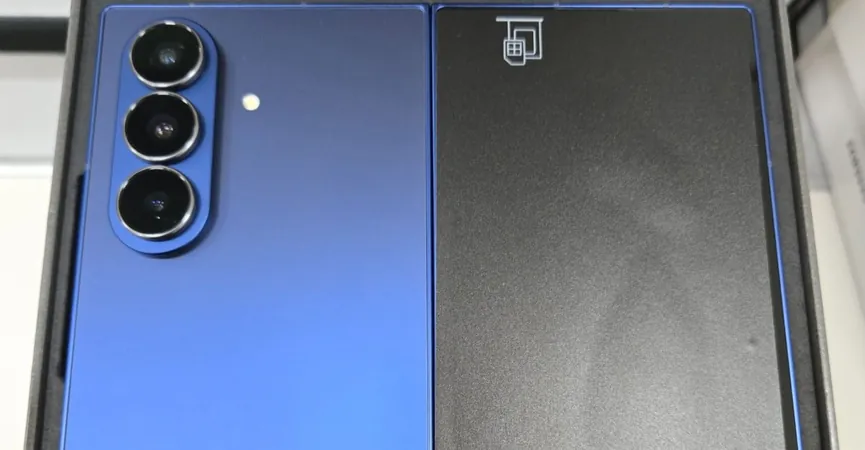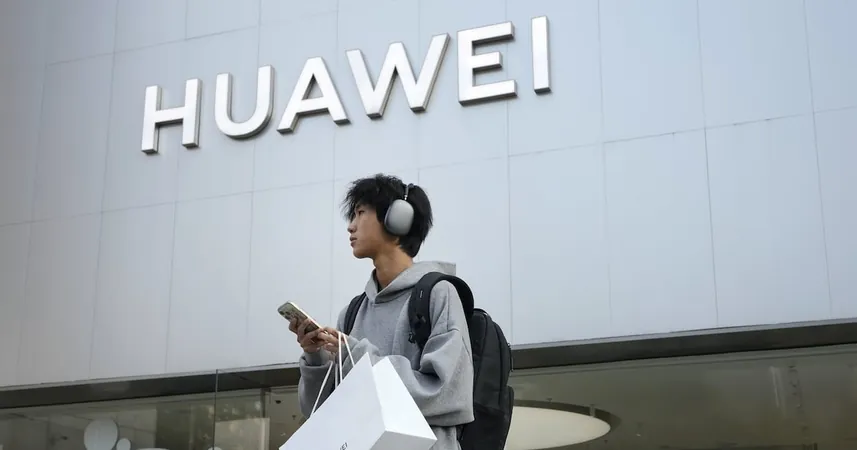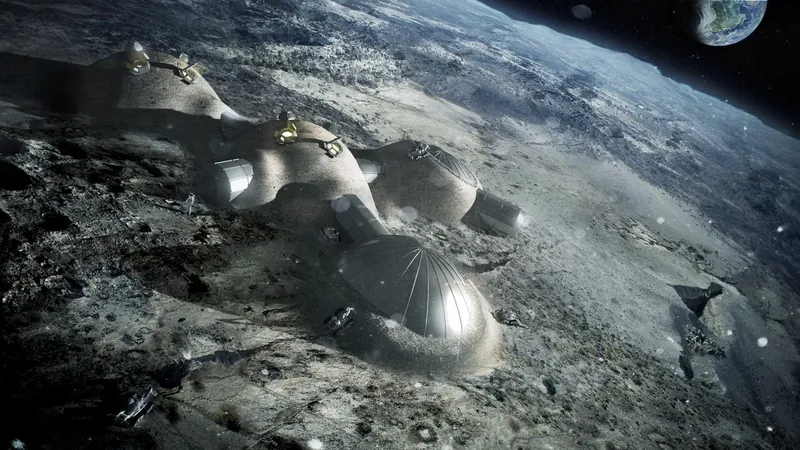
Shocking Discovery: Fast Radio Bursts Linked to Stars' Surfaces!
2025-01-03
Author: Amelia
Shocking Discovery: Fast Radio Bursts Linked to Stars' Surfaces!
Since their mysterious inception in 2007, fast radio bursts (FRBs) have baffled scientists and stargazers alike. These brief, intense emissions of radio waves raise many questions, chief among them: what cosmic forces are behind these fleeting signals? While prior studies had hinted that magnetars—neutron stars with extraordinarily powerful magnetic fields—might be responsible for these bursts, a groundbreaking discovery involving FRB 20221022A has provided thrilling new insights that point to star surfaces as the likely origin of these enigmatic phenomena.
A Fortuitous Observation
In October 2022, astronomers detected the notable FRB 20221022A using the Canadian Hydrogen Intensity Mapping Experiment (CHIME). Designed to track various radio emissions across the sky, CHIME proved to be exceptionally adept at identifying these elusive bursts. What makes FRB 20221022A particularly fascinating is its proximity—just 200 million light-years away—critical for in-depth analysis of the emissions and their properties.
The localization of FRB 20221022A to a specific galaxy allows researchers to examine the interactions between radio waves and interstellar materials, providing vital clues about the burst's source. Unlike many other cosmological signals that travel vast distances through the cosmos, the shorter journey of these photons means interactions with matter near or within the source galaxy are more significant, enhancing the likelihood of isolating their origin.
Polarization Patterns and Stellar Secrets
A key finding from the analysis of FRB 20221022A is its unique polarization characteristics. Over the span of just 2.5 milliseconds, the polarization of the burst underwent a rapid 130-degree shift following an S-shaped trajectory—a behavior akin to that observed in about half of known pulsars. This suggests that the source of FRB 20221022A is likely tied to a compact, rapidly rotating object, potentially a magnetar. However, this specific behavior has only been seen in one other FRB to date, leaving open the possibility of various mechanisms at play.
The Interstellar Puzzle: Scattering and Scintillation
The second part of the analysis delves into the interactions between the FRB and the interstellar medium, shedding light on how the radiowaves had to navigate through material in their path. This "scattering" effect can alter the appearance of the burst over time, causing frequency-dependent delays—much like how twinkling stars appear due to Earth's atmosphere. The researchers linked scintillation patterns to both the source galaxy and our own Milky Way, indicating that the burst likely originated closer to the neutron star than previously thought.
Essentially, this suggests that FRBs could emanate from phenomena occurring on the surfaces of these sizzling celestial bodies, ruling out earlier assumptions of distant clashes between ejected stellar material.
What This Means for Future Research
While the revelations surrounding FRB 20221022A are compelling, astronomers are left with more tantalizing questions. Can this one burst truly represent the broader category of FRBs? With numerous cases of repeating bursts and varying characteristics, scientists are cautious about drawing sweeping conclusions. However, the closure this discovery brings could signal a pivotal moment in astrophysics—offering a glimpse into the behaviors and secrets of neutron stars and magnetic fields that govern the universe's most energetic events.
With advancements in technology and observational techniques, researchers are eager to continue unlocking the mysteries behind these cosmic wonders. As our understanding deepens, the cosmos may hold even more surprises—so stay tuned for future groundbreaking revelations!









 Brasil (PT)
Brasil (PT)
 Canada (EN)
Canada (EN)
 Chile (ES)
Chile (ES)
 Česko (CS)
Česko (CS)
 대한민국 (KO)
대한민국 (KO)
 España (ES)
España (ES)
 France (FR)
France (FR)
 Hong Kong (EN)
Hong Kong (EN)
 Italia (IT)
Italia (IT)
 日本 (JA)
日本 (JA)
 Magyarország (HU)
Magyarország (HU)
 Norge (NO)
Norge (NO)
 Polska (PL)
Polska (PL)
 Schweiz (DE)
Schweiz (DE)
 Singapore (EN)
Singapore (EN)
 Sverige (SV)
Sverige (SV)
 Suomi (FI)
Suomi (FI)
 Türkiye (TR)
Türkiye (TR)
 الإمارات العربية المتحدة (AR)
الإمارات العربية المتحدة (AR)